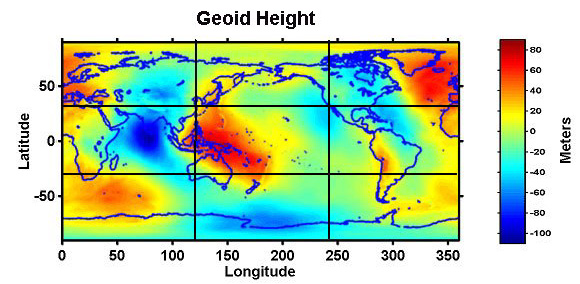

O raio polar da Terra é mais pequeno do que o raio equatorial por causa da rotação da Terra. Pela mesma razão, a atmosfera é mais espessa no equador. As camadas externas da atmosfera são menos atraídas pela gravidade, portanto as suas formas podem variar muito com o tempo. Sim, se olharmos para a Terra a partir do espaço, sem qualquer dúvida que é uma esfera. Só com medições precisas poderemos ser capazes de notar quaisquer desvios da forma esférica. Is the Earth a sphere or not? I think that the Earth is a sphere only if we consider the atmosphere. The shape of the Earth is that of an oblate spheroid; a sphere with a bulge around the equator (because it’s rapidly rotating on its axis). The radius of the Earth on the equator level is 6378 km. However at the the north or south pole the so called Earth polar radius is 6357 km (approx. 0.3 % less). When we look around us we see peaks and valleys which means that the Radius of the Earth varies from place to place. For example, if we are at the top of mount Everest we will meausure, for the Earth radius about 8km more than we would at the sea level. However the difference is only of the order of 0.1%. The fact that the interior of the Earth is not homegeneous also contributes for a variable radius (due to the difference on the gravitational interaction) with differences of the order of 100 meters (see figure). If a billiard ball were scaled up to the size of the Earth we will see mountains on the billiard ball with more than twice the mount Everest. In this sense we can say that the Earth is more smoother than a biiliard ball.
The polar radius of the Earth is smaller that the equatorial radius, because of the earth rotation. For the same reason the atmosphere of the Earth is more thicker at the equator. The outer layers of the atmosphere are less attracted by gravity so that their shape may vary greatly over time. Yes, if we look at the earth from outer space we would say, without any doubts, that it is a sphere. Only with accurate measurements we would be able to notice any deviations from the spheric shape